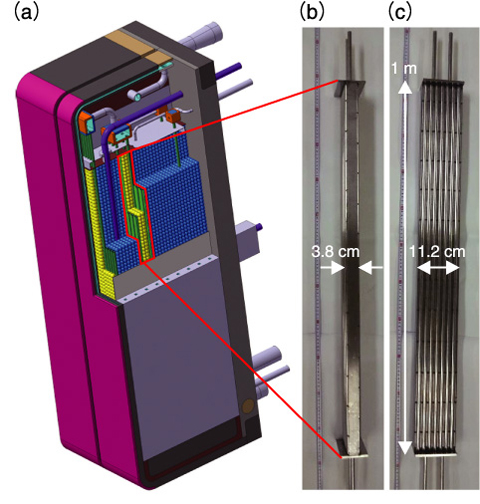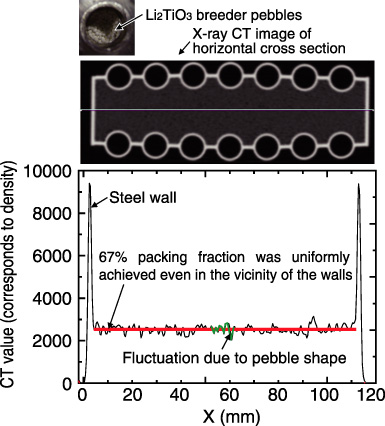
Fig.3-11 Internal structure of a water cooled ceramic breeder blanket

Fig.3-12 X-ray CT image of the interior of the BPC and packing fraction of breeder pebbles
The blanket is located in the vacuum vessel of a fusion reactor, surrounding the fusion plasma. Its functions are to extract heat from fusion energy, and to generate the fusion fuel tritium using fusion neutrons. Tritium is generated by a nuclear reaction between neutrons and the tritium breeder: lithium meta titanate (Li2TiO3) pebbles. Li2TiO3 pebbles are contained in a breeder pebble container (BPC) in a blanket module. Since the BPC is expected to attain high efficiency in tritium production and heat extraction, it is required to be leak-tight and robust with a thin wall structure to minimize the structural material mass in order to maximize tritium breeding efficiency.
We have succeeded in fabricating a full scale mockup of a BPC with reduced activation ferritic martensitic steel, using a fiber-laser welding (FLW) method (Fig.3-11). Generally, in welding, the structural material shows softening induced by heat input during welding. FLW has a high laser beam focusing capability, and therefore it can minimize the softened region. This FLW method was successfully applied to welding plates 1.5 mm thick to tubes 1 mm thick and 11 mm in diameter, without penetration of the weld bead through the tube. The width of the softened region was less than 0.2 mm, which is small enough to maintain robustness together with the thin wall structure. Its leak-tightness and robustness were confirmed with 0.5 MPa helium (He) gas.
Breeder pebbles 1 mm in diameter were packed into the BPC for evaluation of the packing fraction and packing uniformity. By measurement of the total volume of the BPC and total weight of the Li2TiO3 pebbles, the average packing fraction was confirmed to be 67%, which is sufficient for the expected heat transfer and tritium production. Fig.3-12 shows a horizontal cross-sectional image of X-ray computer tomography (CT) of the BPC. The X-ray CT image shows uniform packing of the pebbles. The observed CT value showed no major porosity, which would degrade heat transfer, in the central region or near the walls.
This achievement presents a bright prospect for efficient tritium breeding and high grade heat extraction by the blanket.